| Early Spring Date: | March 9 |
| Late Spring Date: | May 1 |
| Best Dates to See in Spring: | April 6-14 |
Spring: Pine Warblers often pass through Monticello Park in small numbers; in many years, 5 or fewer are counted. The best time to look for them is during the first two weeks of April. They mostly winter in the southern United States, and they are one of earliest returning migrant warblers. They breed in the Washington metro area, and they are one of the few warbler species who overwinters here.
Fall: Pine Warblers are not common at Monticello during the fall. In most years, one or none are seen. You have a much better chance to see them in the pine trees at Lyndon Baines Johnson Memorial Grove along the George Washington Parkway.
Where to See Them in the Park
Pine Warblers generally forage in the mid-story and above. You typically should look for them in stands of conifers, but Monticello does not have this habitat.
Physical Description
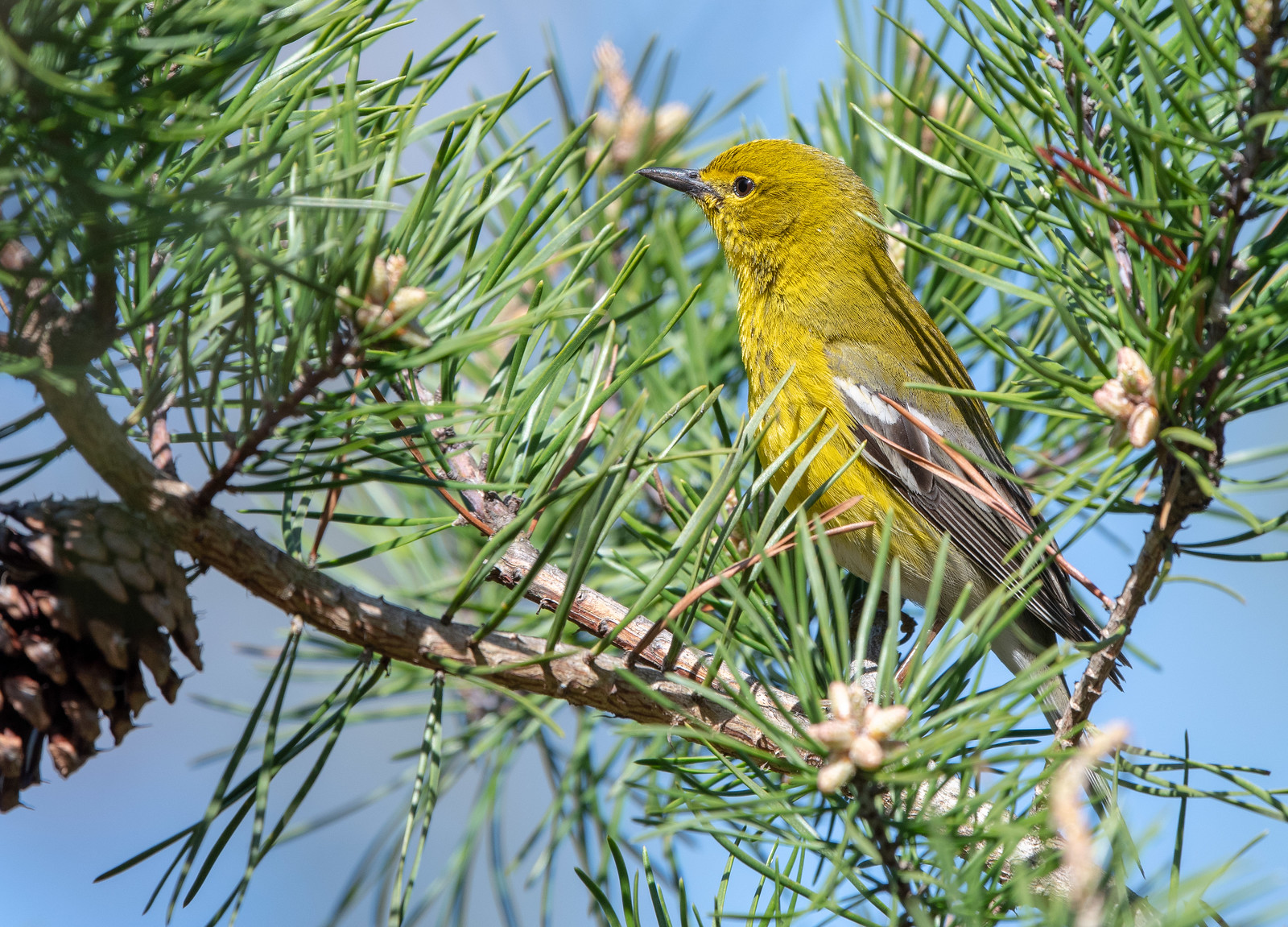
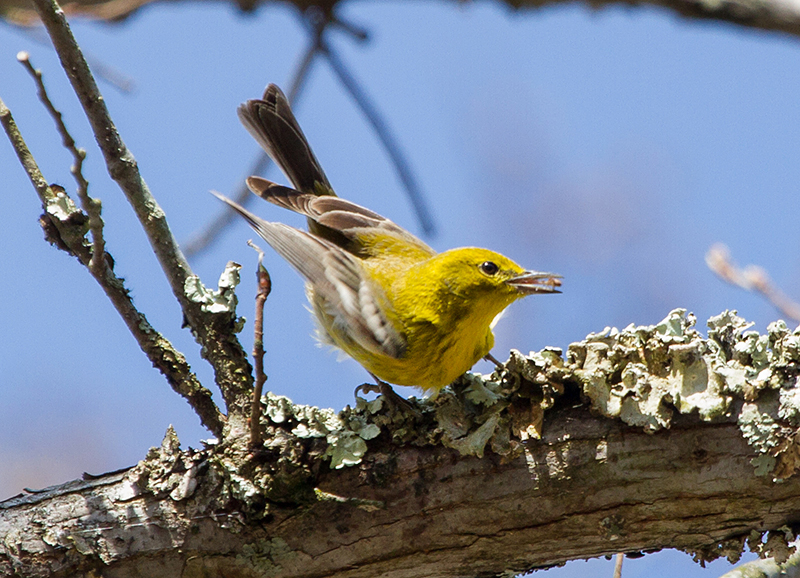
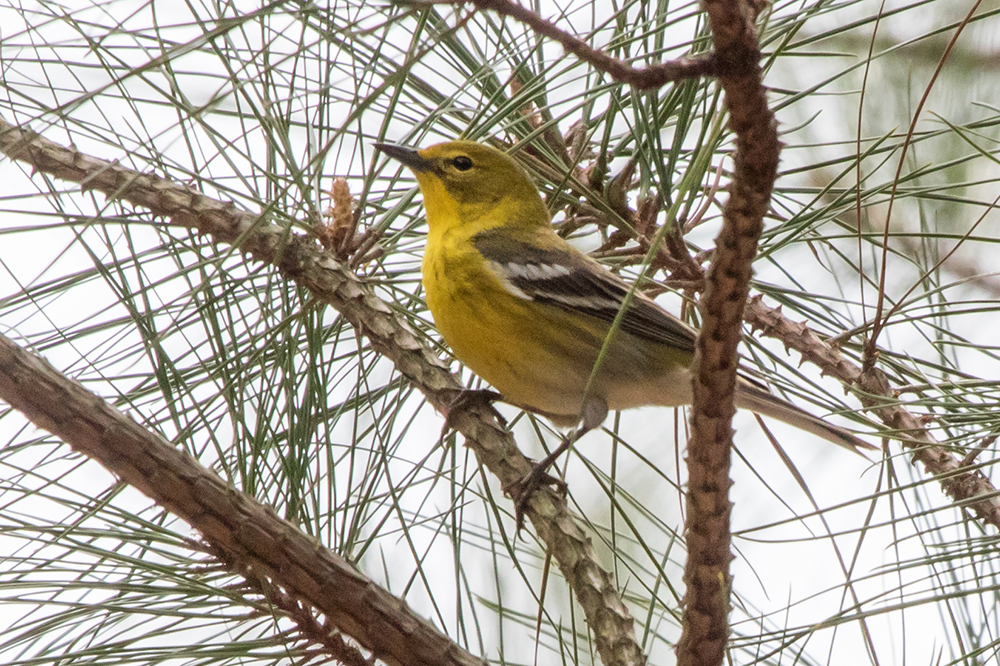
Pine Warblers are large and robust, and they show a lot of variation in plumage. Some males have an olive head and back, a bright yellow throat and breast, and gray wings with two wingbars. They have a yellow line through the eye and an almost complete yellow eyering. However, some males are not bright yellow, and the sex of the bird cannot be determined.
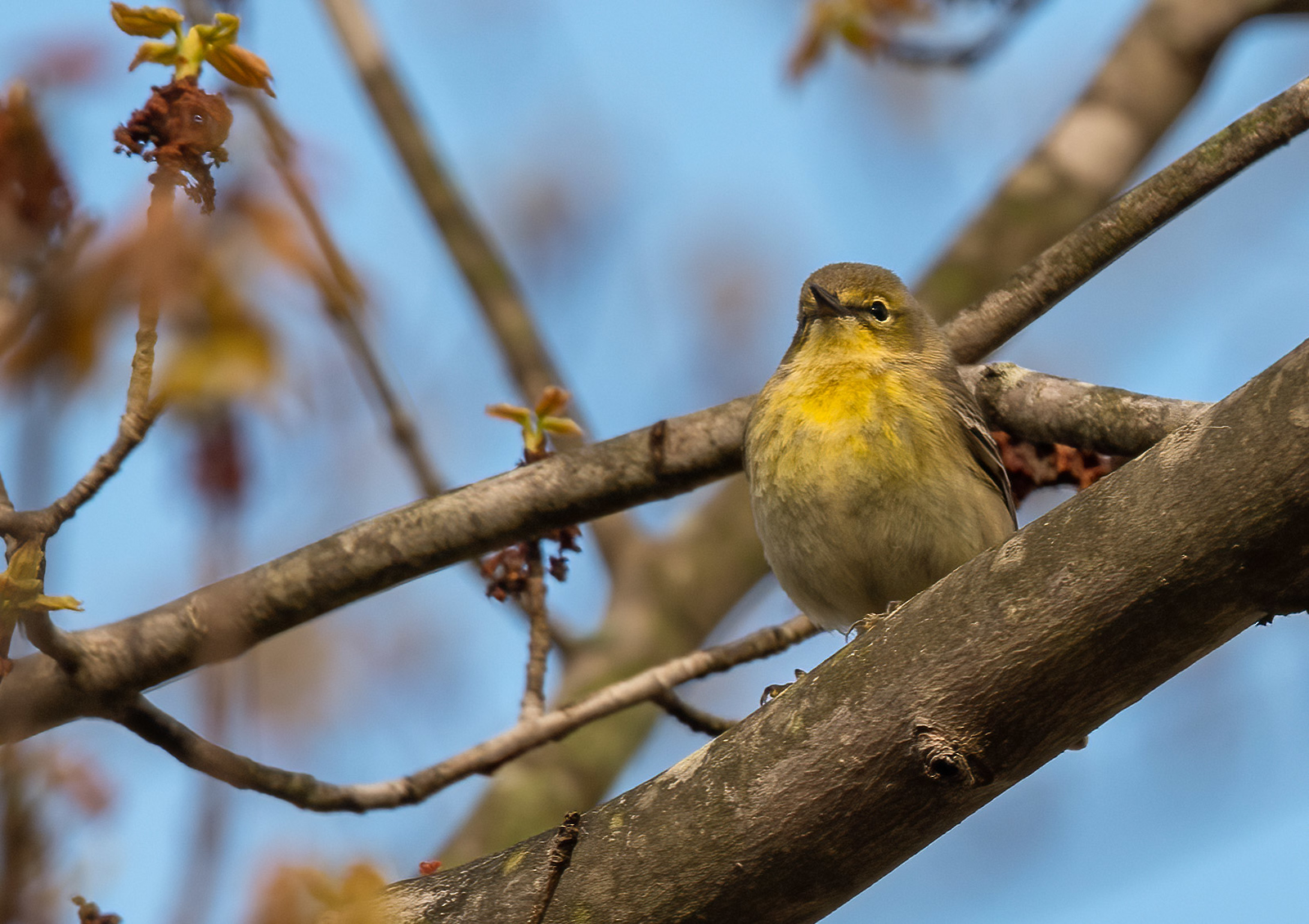
Female and some males are duller, with a broken eyering that is whitish rather than yellow. These birds are not nearly as yellow underneath.
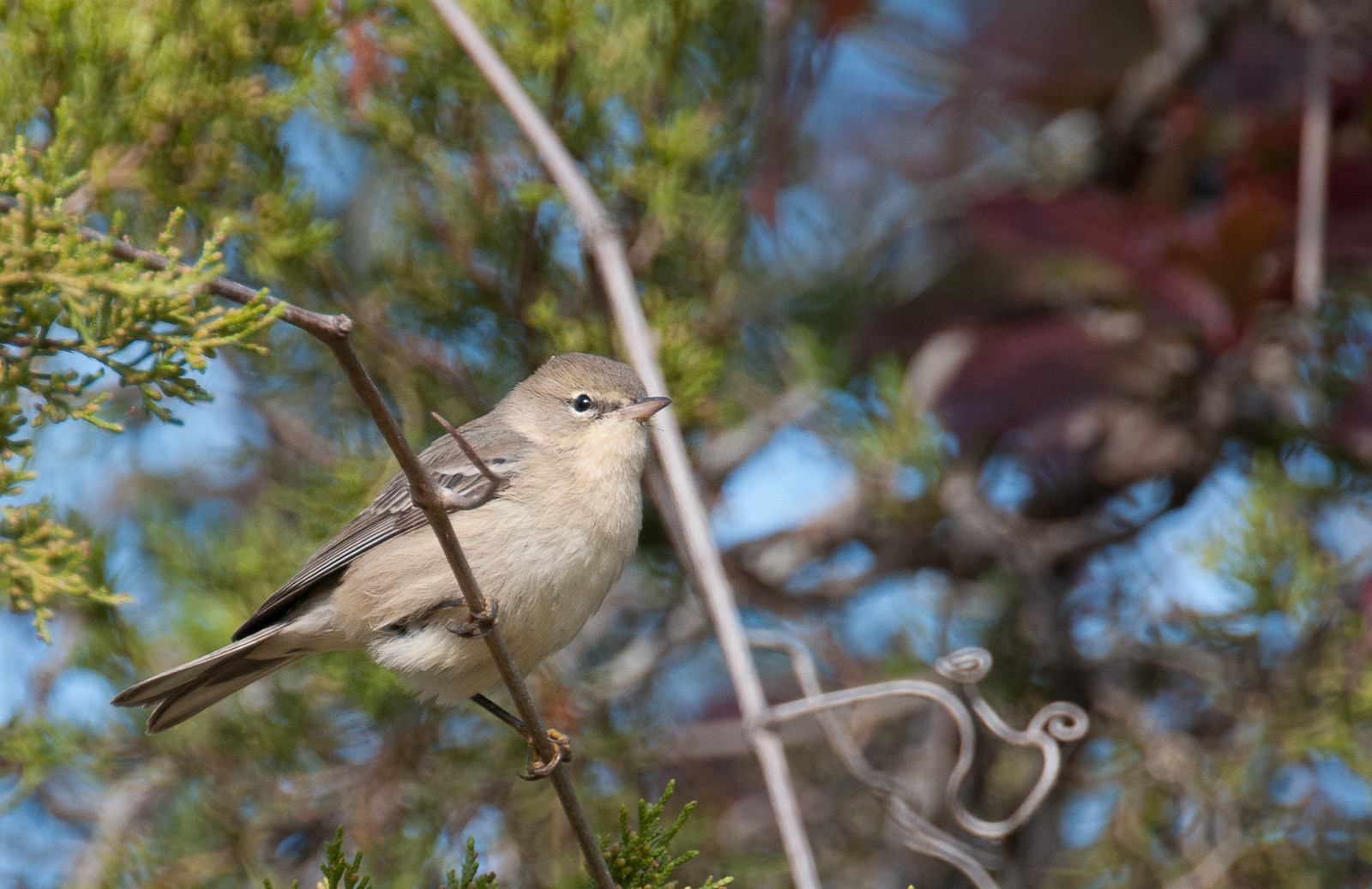
Fall: Fall adult Pine Warblers can look like either the males or females described above. First-year Pine Warblers can be LBJs (little brown jobs) who can be difficult to identify. The drab birds have dark wings with two white wingbars, and they have a broken ring around the eye. First-year birds have little or no streaking below, and none of their fieldmarks stand out.
Vocalizations
The song of the Pine Warbler is almost as confusing as it plumage. It is a trill that can be either slow or fast, and it can be confused with the song of a Chipping Sparrow or a Dark-eyed Junco.
Hear the vocalizations of the Pine Warbler.
Notes
Pine Warblers eat a lot of seeds from pine cones, which is how they survive in the Washington Area during the winter when insects are scarce. They are one of the few warblers who visit bird feeders. Most warblers are in the Washington Area only while breeding or migrating. They tend not to visit bird feeders away from their wintering grounds, because they prefer a protein-rich diet of insects and other arthropods. For people interested in attracting warblers to their yard, a bird bath or other source of water will be more successful than a feeder.
Origin of Names
Common Names: Pine from the bird's habitat. The New World Warblers were named for their similar appearance to European warblers, to whom they are not related. Most of the New World warblers do not warble (sing continuously with notes that change frequently).
Genus Name: Setophaga means moth eating.
Species Name: Pinus means pine tree.
Pine Warbler video footage
Return to the Index
